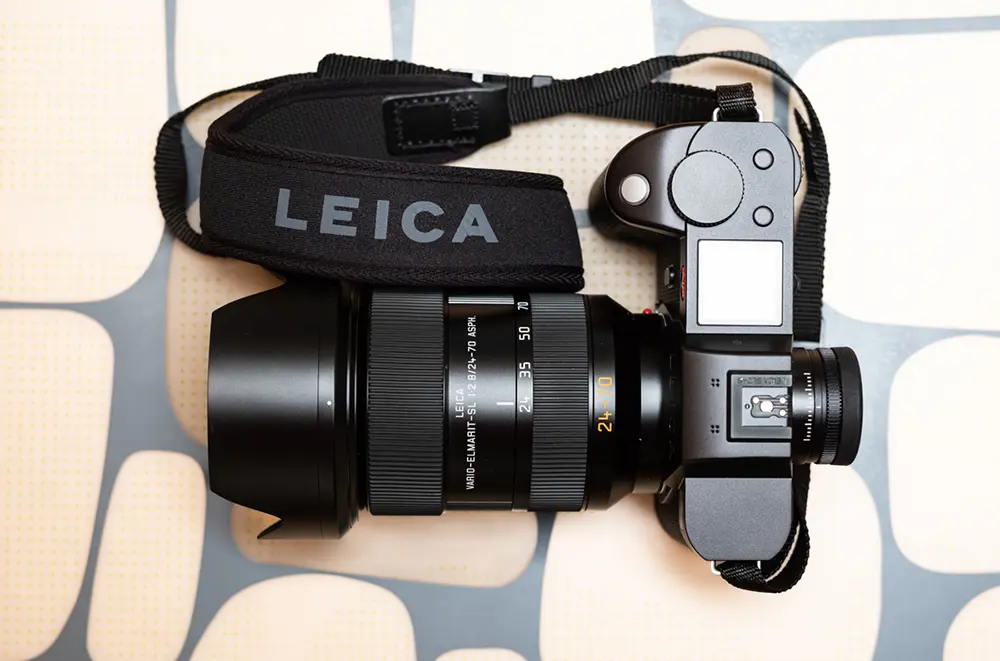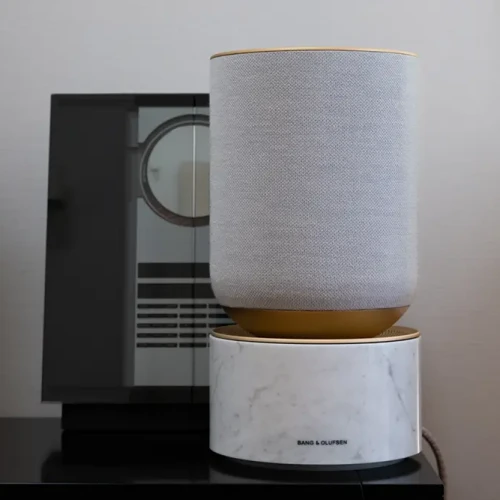HASSEL BLAD 503CX True square photo.
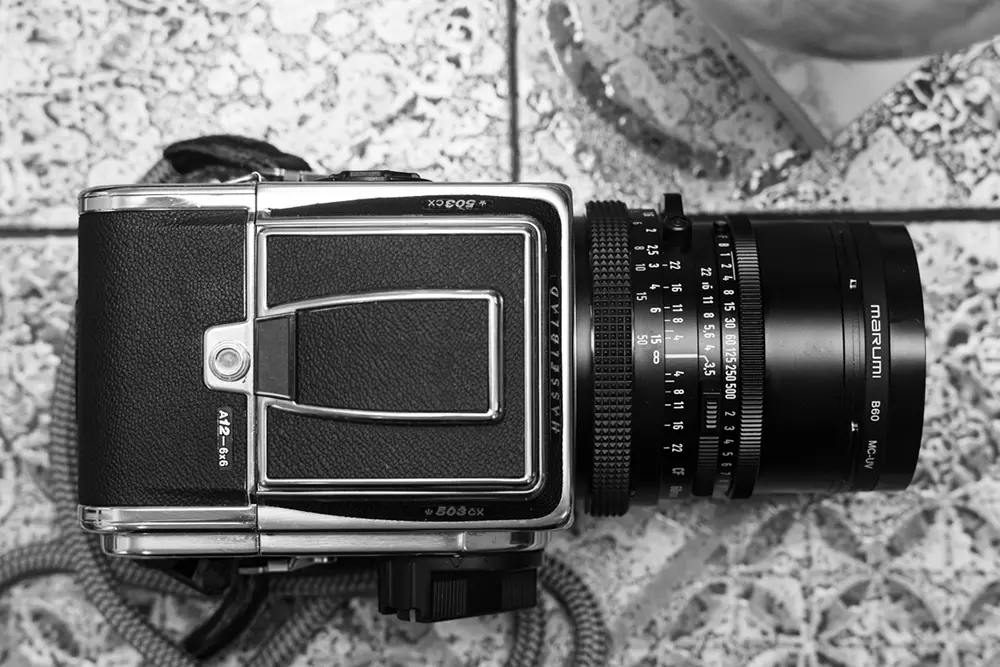
Let’s try square photos.

Introduction.
When it comes to square photos, Hasselblad and Rollei are well known for their 6*6 format.
In this article, I would like to talk about Hasselblad.
The film used is medium format.
Today, the full-size format referred to in digital cameras is based on the 24mm-36mm length and width format, which in film is called the Leica version. In the film era, there was a larger format called the 120 format, which was 60mm in height and had a different screen size depending on the camera, and was also called medium format. The Hasselblad introduced here is in this 120 format, which can take 12 square photos of 56mm per film.
Reverse image viewfinder that reverses the left and right images.
The Hasselblad is an SLR camera, but instead of prism glass like modern cameras or mirrorless cameras, it has a reflective mirror, which means that the image in the lens is viewed through the viewfinder, so the picture seen in the viewfinder is the opposite image. Since the image seen in the viewfinder is the opposite of the movement, it may be uncomfortable at first, but you will soon get used to it.
Since it is a single-lens reflex camera with interchangeable lenses, there are a wide range of lenses from wide-angle to telephoto, and since the lenses are Carl Zeiss lenses, they are very good at taking pictures.
The most famous lens is the Planar 80mm/F2.8 standard lens (equivalent to 50mm in full size format). I use this Planar as a base lens and also use the Distagon 60mm/F3.5, Macro Planar 120mm/F4, and Sonar 180mm/F4 lenses.
The original tilt LCD, the fun of looking into the camera from above.
The waist-level viewfinder is a feature of Hasselblad and Rollei lenses, and is used to look through the viewfinder from the top.
I use Hassel and Rollei lenses because I enjoy the act of looking through the viewfinder from above and taking pictures. I am especially impressed just by looking at the beautiful subject reflected in the Hassel waist level viewfinder.
It’s a bit tedious, but once you get used to it, it’s fun!
There is a bit of a ritualistic element to using the camera, such as loading the film, taking out the film, and changing the lens, but once you get used to it, it is not so much of a problem. I won’t go into the technical specifications or how to use it this time, but if you are interested, I recommend you check out the Internet.
Since we are talking about enjoying film photography, we have omitted camera specifications, lenses, and detailed explanations.
One of the features of Hasselblad photos is that there are two wedge-like trails on the left side of the frame of the photo. This is because the notch that holds the film in place when the film is sent is visible in the frame of the photo. (Assuming you do not crop the image.)
1.KODAK Portra400
Portra is the standard for color photography. Portra is a standard for taking color photos. It has a soft tone and is often used for portraits of women. It is a high performance film, and the red of the lanterns at Kaminarimon in Asakusa comes out well. This photo was scanned from film, but the actual print will be corrected and the colors will shift toward warmer tones. I noticed after scanning that the film was taken with a colder color tone, closer to cyan.
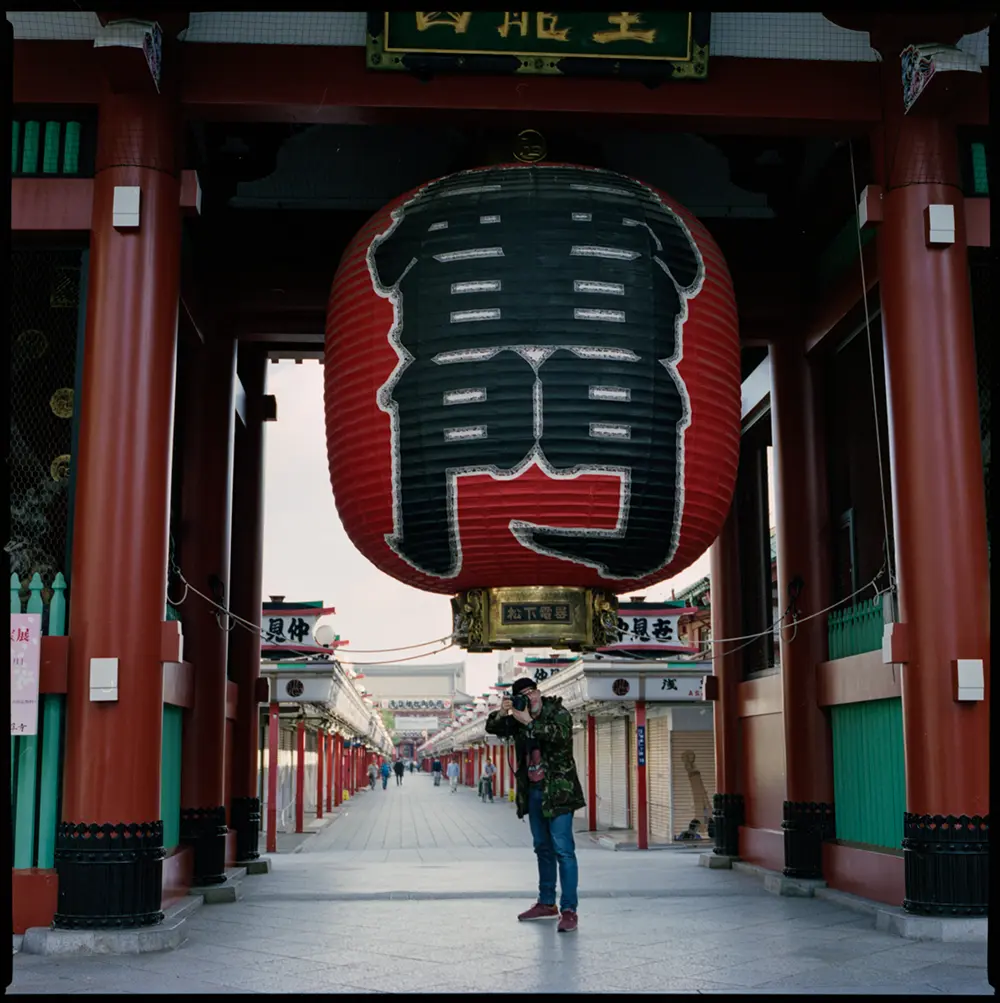
2.KODAK Portra160
This is Portra160, a film with higher image quality and better grain than 400, but I myself am not looking for high image quality, so I use it less often than 400. The colors are more saturated than 400, so I use it when I want to bring out the colors. The red color of the signboard of the store in this photo is a little cold (cyan), but it is Portra’s unique tint.
The straight lines in the composition make for an interesting picture of a perfect square. This is simply a photo of a signboard in the center of a wall, but it is this square photo that creates the atmosphere of a typical store signboard, even if it is taken in a staggered position.

3. FUJI Pro400H
This is FUJI’s Pro400H film, which is the twin of Kodak’s Portra.
It is basically a film suitable for portraits, but it has low saturation and is designed to be used by professionals who use filters to add color to their photos for printing.
It is a film that produces more beautiful colors in low light than in high light.
When you take pictures with film, you will see elements in your photos that you don’t think about as much with digital, and it will change your understanding of photography.
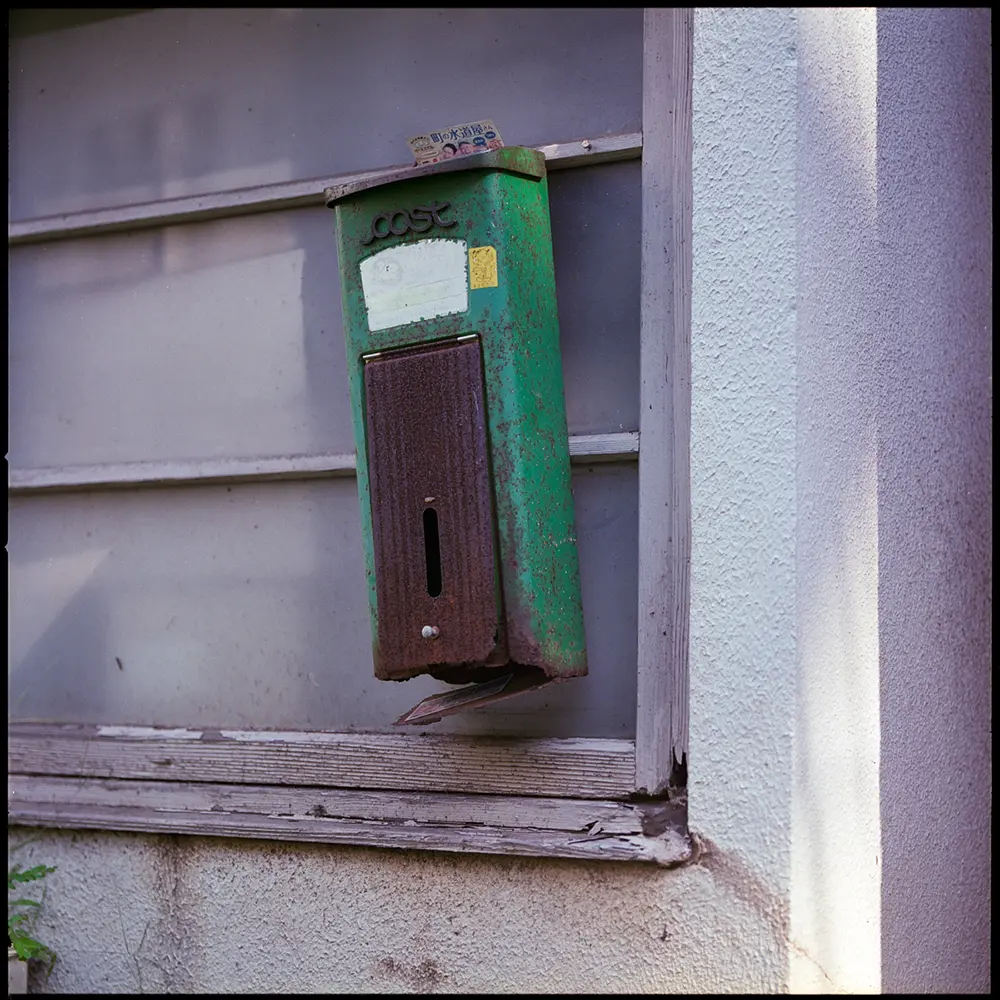
4. FUJI Provia 100
All three photos above are color negative film, but this is reversal film.
As explained briefly in the Leica section, reversal film is color accurate and produces near-digital images.
The Provia 100 used for this photo was poorly stored and had been purchased some time ago, so the film has deteriorated and is covered. The white frames on the left and right sides of the frame are covered with the film. I reconfirmed that if you use reversal film, you should store it in a refrigerator.

5.KODAK T-MAX100
From here on, the photos will be in black and white.
T-MAX has high sharpness, good resolution, wide dynamic range, and a modern look.
This photo was taken and developed straight through, using R09 (Rodinal) as the developer.
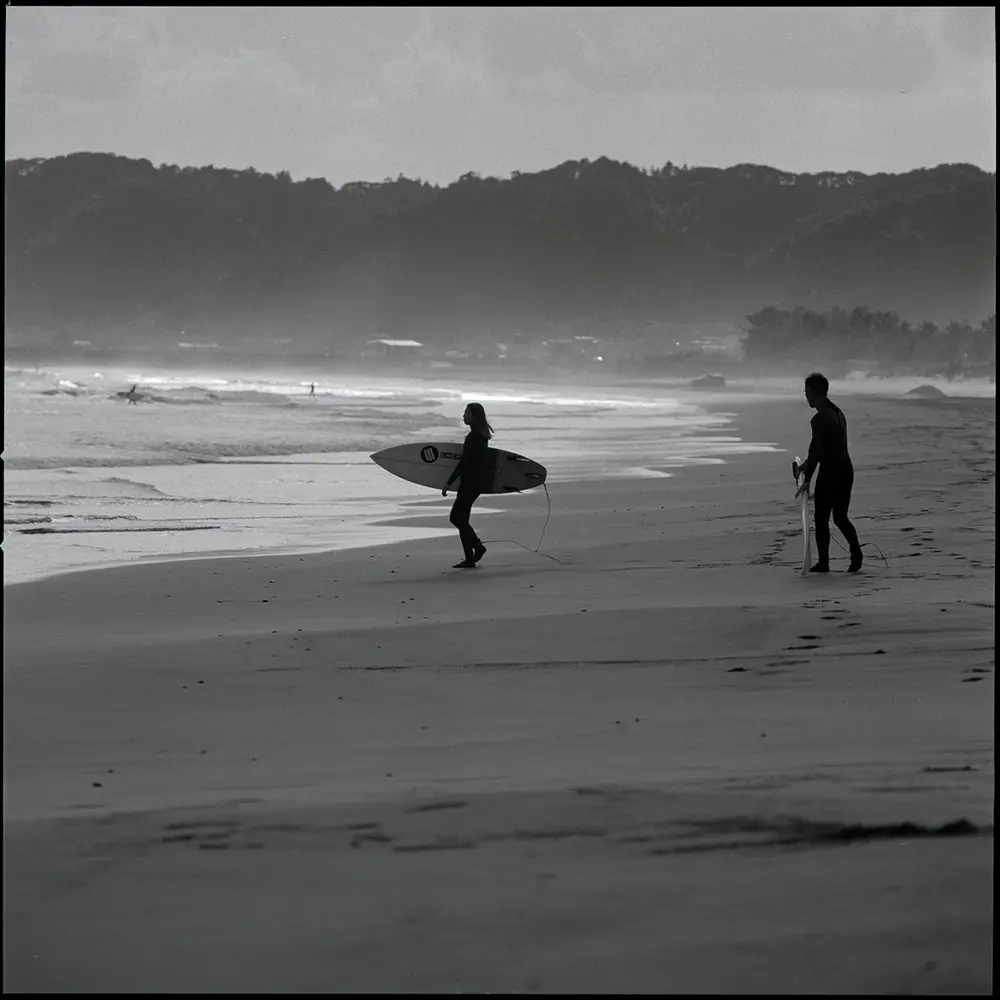
6. KODAK Tri-X 400
The last one is Tri-X400, which is a royal road.
This picture was developed with Tri-X400 at Pull200 (shot at ISO 200 and developed at ISO 200).
As I recall, the photo was taken with the aperture wide open, so it has a very soft impression.
I love the subtractive tone of Tri-X400 and use it often. This photo was also developed with R09 (Rodinal).
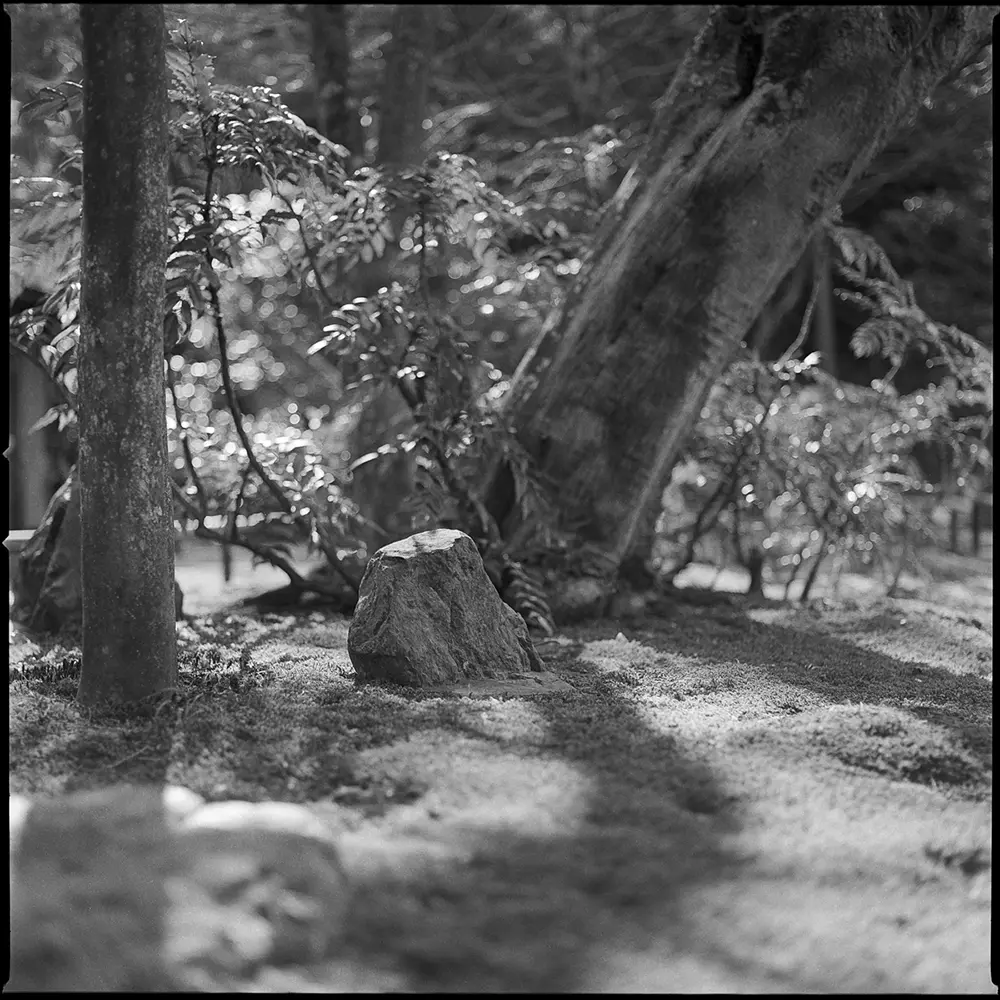
Conclusion.
I had planned to write an article about enjoying film photography with Hasselblad, but it turned out to be an unconnected article and it was difficult to convey what I wanted to say.
Here is a brief introduction of the Hasselblads I own
- Hasselblad 503CX
- Carl Zeiss Planar 80mm 2.8 (standard)
- Two Film Magazine A12s (used for simultaneous color and B&W photography)
- Carl Zeiss Distagon 60mm 3.5 (equivalent to standard 35mm on the wide-angle side)
- Carl Zeiss Distagon 50mm4 (equivalent to 28mm on the wide-angle side)
- Carl Zeiss MacroPlanar120mm4 (telephoto, for macro)
- Carl Zeiss Sonnar 180mm4 (telephoto)
I use the Hasselblad.
The Hasselblad has a beautiful viewfinder, and I enjoy taking pictures through this viewfinder. Also, since the film size is a perfect square, the composition of the picture is different from that of a 3*2 digital camera, which makes the picture more interesting when viewed with eyes accustomed to full-size photography.
However, once you get used to it, you will have no problem operating the camera, loading and unloading the film, and changing the lens after a few times.
I feel that you can only take 12 pictures with one roll of film (although 12 is enough), but it is an interesting way to take photographs, capturing exactly what you really want to capture, so if you are interested, please give it a try.
As a side note, many fashion photos taken before the spread of digital technology were taken with Hasselblad cameras, which are used by professionals in studios. It is also famous for being the camera that took the Apollo mission to the moon.
I think it is fun to use a Hasselblad with such historical background in mind.
Shop.
I buy my film cameras from Onuki Camera in Yokohama as well as Leica.
This store is also a long-established store and carries a variety of cameras. They also have a full line of peripherals and accessories, and their main focus is on photography, so no matter how old your camera is, it will be well maintained and if something goes wrong, they will fix it.
The staff is also very knowledgeable and skilled in photography, so they can help you with any problems you may have with your photos.
This store can satisfy everyone from beginners to experienced photographers, so if you have a chance to visit Yokohama, why not extend your visit?
“Onuki Camera WEB site” Global shipping is not supported. Come to the shop when you come to Japan.


